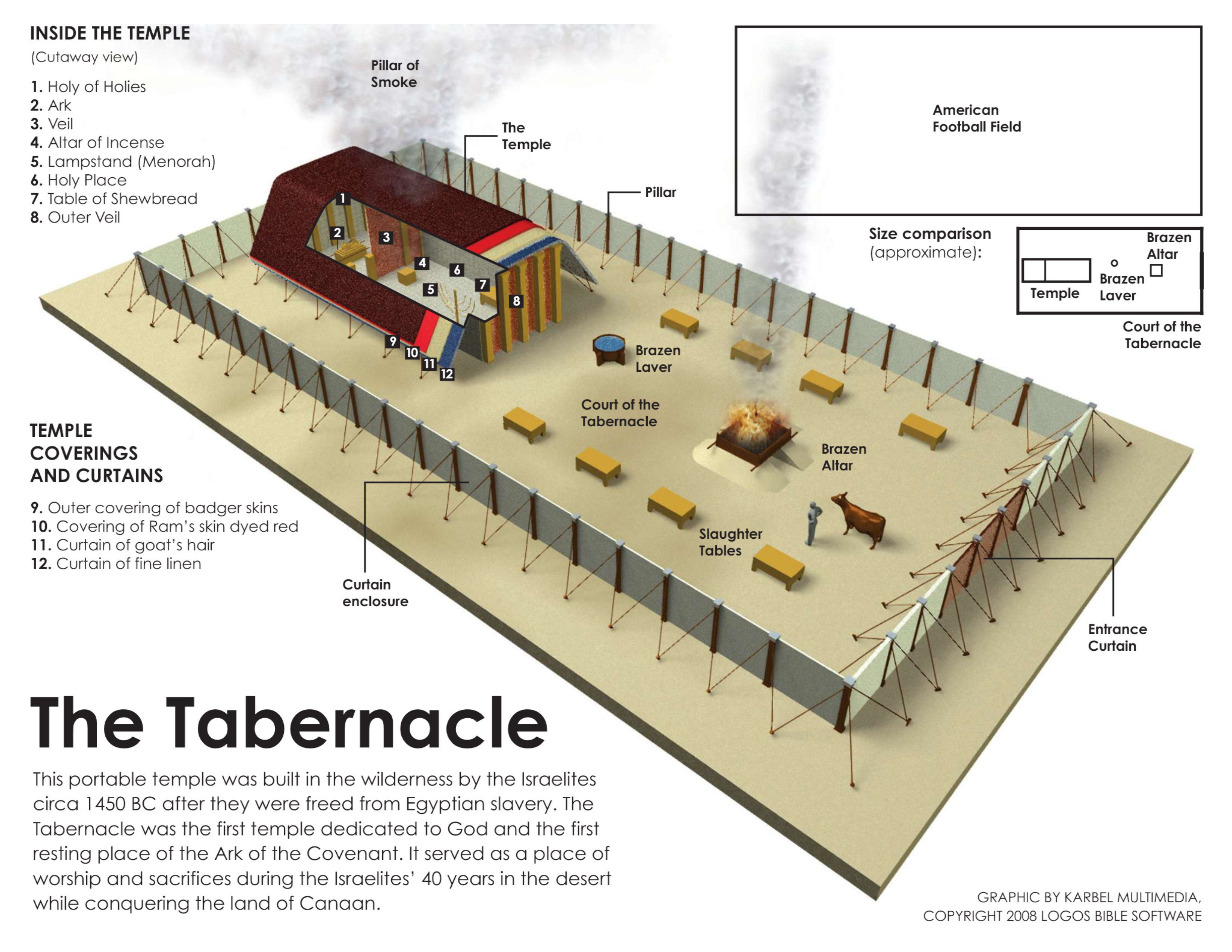Dear RTB’ers,
I should have posted this yesterday – if you are up to date we have hit a stride that gets a bit difficult. To this point in Genesis and Exodus we have been doing mostly history with only a few genealogies mixed in. Now we are reading God’s instructions to Moses on specifics of building the tabernacle and all its contents. It gets a bit dry and hard to follow, so it’s good to have a Study Bible handy to look at artists’ depictions of what each item looked like and of the entire configuration of the tabernacle and its contents. So here’s my suggestion – grab your Study Bible or get on the Internet to see some pictures and maybe explanations of these constructions and their uses. The measurements make more sense when you finally see what the final product looks like. Here, for example, is the best drawing I have ever seen of the tabernacle and it’s accoutrements:

Beyond those measurements and constructions and garments, we’ll have a lot of sacrifices and laws to talk about months down the road when we get to Leviticus! Good stuff, eh?!
Blessings!
Thanks, Fred, for encouraging us to check out additional visual aids like the one you posted to help us get a handle on what the verbal specifications are saying. (There is a reason architects use blueprints and do not rely solely on textual specifications!) However, the diagram you posted presents a couple problems. Although I have not checked everything in detail, my guess is that the drawing itself is reasonably accurate. However, the text surrounding the diagram leaves much to be desired.
For one thing, the text refers to the inner tent (the Tabernacle proper) that encloses the Holy Place and the Holy of Holies as the “Temple”, but as far as I can recall, the Bible never uses that term for the Tabernacle. Rather, “Temple” is used to refer to the permanent structure in Jerusalem that replaces the Tabernacle. Let’s not conflate and confuse these terms. When you think “Tabernacle”, think “tent”; when you think “Temple”, think “building”.
Another problem is in the last sentence of the paragraph describing “The Tabernacle”, which states, “It served as a place of worship and sacrifices during the Israelites’ 40 years in the desert while conquering the land of Canaan.” That sentence is wildly misleading. First, the Israelites specifically did not conquer the land of Canaan while wandering in the wilderness. The conquest came after the wandering. Second, the Tabernacle survived as the center of worship well beyond those 40 years. The Tabernacle continued in service for another 400 years or so, all the way until Solomon built the Temple to replace it.
Do those issues affect my faith in any great measure? No, not really. But little errors tend to lead to big errors if we aren’t careful. So yes, let’s check out our Study Bible notes and other resources on the web, but let’s all take great care in doing so. Let’s not just blindly accept what those notes say.